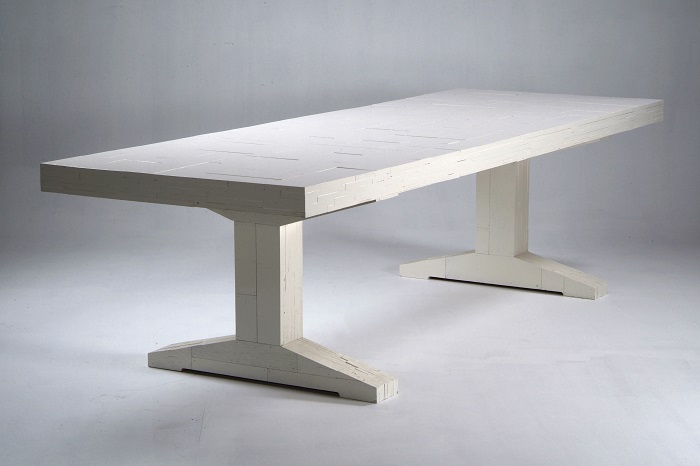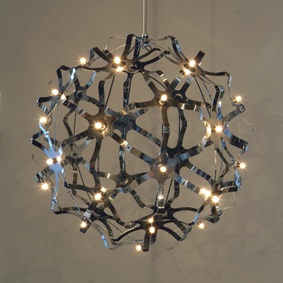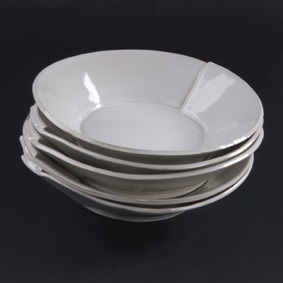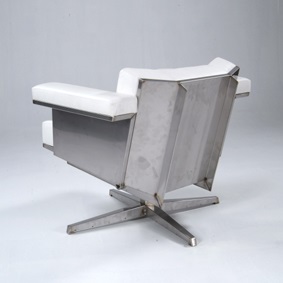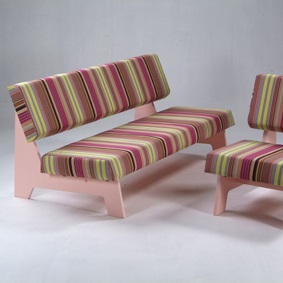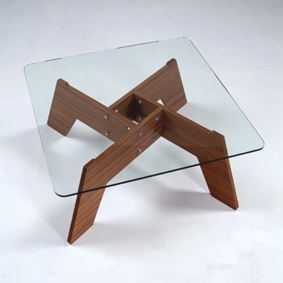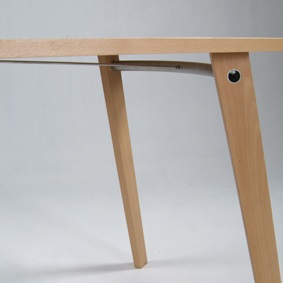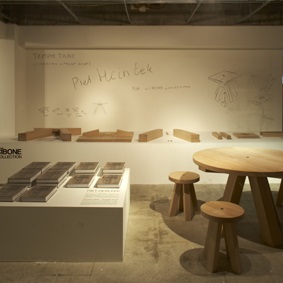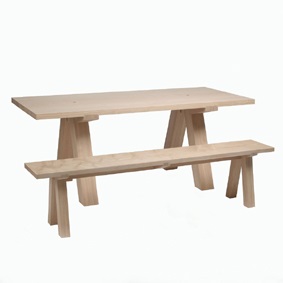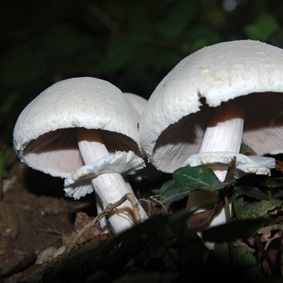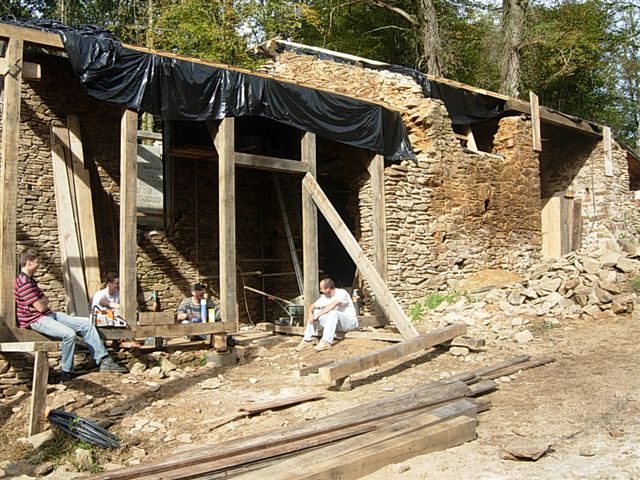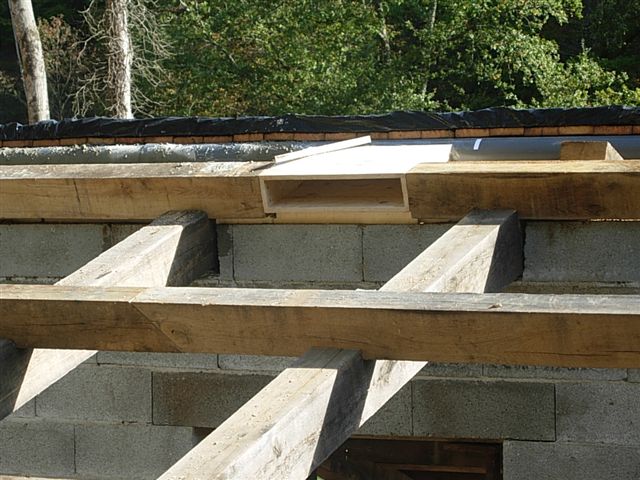During the past few months, I have been on an extensive tour in Europe and Japan, presenting the book and our products. The trip included Amsterdam, London, Hamburg and Tokyo. I also managed to fit in a holiday visit to the Dordogne as well, to check up on and enjoy the progress that has been made on the house project. All quite hectic really, particularly as travelling has never been my favourite pastime.
The Woonbeurs has always been our preferred venue for launching new products as we can personally see how people react to them. We presented a lot of new material this year: the ‘voetballampen’ or football lamps, which we presented in Milan for the first time in April, white-painted products made of scrap wooden sheet (‘afval producten’ or scrap products), ceramic plates, dishes and mugs in the ‘platte klei’ (Clay Sheet) range, luxury armchairs made of steel (one made of stainless steel with white leather upholstery and the other with a black frame and dark upholstery). We also presented the ready-upholstered Crisis Collection armchair, the Crisis Collection bench and coffee table, the ‘buistafel’ or tube table and chairs and of course the book! The ‘kussentjes’ sofa was on display again, as this product has been extremely well received and has also been developed further since its original conception.
Displaying all the new products in the showroom at the same time in the period after the exhibition proved difficult, as various products were either continually out on loan or sold out. However, the complete collection is now on display at our site. We have completely rearranged the showroom to do each product justice! We are now open to visitors from Monday to Friday and on Saturday morning.

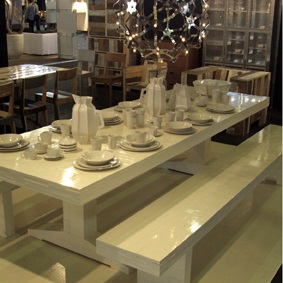
The idea of using white-painted scrap wood material arose when I was thinking about the house we are currently building from scrap materials (more details to follow). The walls of the house are made of wooden sheet and painted white. I couldn’t get the picture of those virgin white walls, made from a jumble of small and large off-cuts, out of my mind. The products are hand-built with the same care and attention as the scrap wood collection and finished with several generous coats of white paint. We placed the white ceramic products on the white table and hung the football lamp above the resulting ensemble. The final result was very stylish, which is an exhibition first for us!
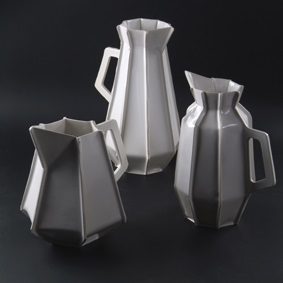

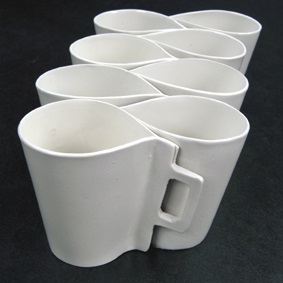
The range of ceramic products is now so extensive that it can be called a collection. We have used the flat clay sheet technique to add plates, mugs and dishes to the range. We now also make dishes that are assembled from moulded components. While this reduces the amount of handcrafting that goes into the finished result, it does mean that we can make much larger products. To a certain extent, this was to indulge Jeanine and Lotty as they were never totally in favour of the flat clay sheet technique.
Making products from flat pieces of clay is extremely inefficient and just feels unnatural. Especially so, when you know how easy it is to make ceramic products using moulds. However, the purity of the uncompromising and apparently senseless effort that is required to produce these products gives them their own individual character. We will present the whole range in Milan in February.
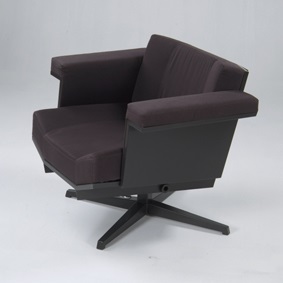
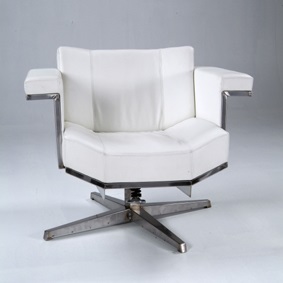
The design of the armchairs has been inspired by science fiction films. Mad Max gave me the idea for one of the armchairs and the other one was inspired by Star Wars. The designs are based on pressed metal sheet components that are then assembled to form the seat, backrest and reinforcements. We are still modifying the details (to improve ease of manufacture and comfort), but the basic statement made by these armchairs is universal, new and timeless. As is the case with most of our products, this new design will offer all kinds of spin-off opportunities in the future. The basic method of construction can be applied to make other products and models.
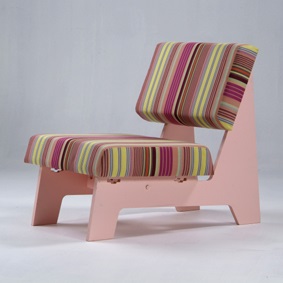
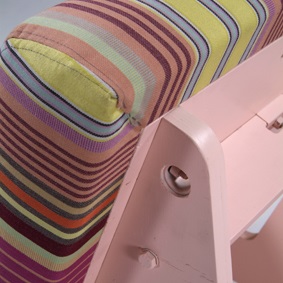
The Crisis Collection continues to grow and is now starting to sell well, which we did not really anticipate. After making the upholstered, high and long benches in the ‘Bakkerswinkel’ on the site of the ‘Westergasfabriek’, going on to make armchairs and benches in the same style was no more than a logical progression. The fabric is stretched around the wooden sheet structure of the benches and then fixed in place. Nothing could be easier in terms of furniture upholstery. The trick is to make the upholstery look as though it blends into the structure.
As the exhibition stand was black, we wanted to present our furniture in as eye-catching a way as possible, so we chose a multi-coloured fabric and bright frame colours. We made a coffee table to match the bench and armchair ensemble. This is based on the design of the square Crisis Collection table. The glass top allows you to see how the table is constructed. The table is made of four identical elements, but is not symmetrical!
The ‘buistafel’ or tube table
The ‘buistafel’ or tube table has been developed to complement the chairs. These products look (and are) quite ordinary, but are put together in an unusually attractive way. We have used a similar technique to the Crisis Collection washer/nut/bolt approach, using a tube to connect the legs of the table and chairs. The legs are attached to the seat base and table-top by a long bolt that is inserted vertically into a hole in the top of the leg and retained inside the cross-tube. This is a surprisingly strong way of mounting the legs.
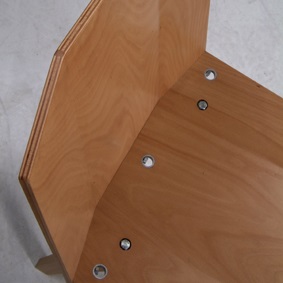
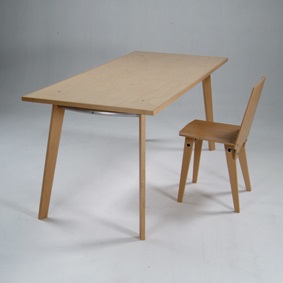

We needed to contour the seat base for added comfort. We did this by ‘bending’ the wood into a V-shape. Obviously, you cannot actually bend wood, so we machine a groove and glue in a V-shaped profile to create the required contour. This profile can be seen when you view the edge of seat base from the front and, for those with sharp eyes, when looking down at the backrest from above!
Japan
Each visit to Japan is intensely memorable. Looking back on all the people I have met and the memorable moments after each trip is totally inspirational. This time, I was invited to attend the presentation of the first part of a new collection, which is made to my design. This is the Temple Collection, which consists of tables, stools and benches.
The design was inspired by a visit to a Japanese temple. We were not allowed to go inside as the temple was being renovated. But we could see a lot of what was going on through the barriers. A carpenter seemed to be having difficulty placing a beam in the desired position. He used a hammer to flatten down each end of the beam and then asked a colleague to help him beat the beam into place using brute force. It went in, but only just. To my surprise, the next beam was prepared and installed in exactly the same way. So the beams were not too big at all; they were exactly the right size and formed an indestructible structure once they had been knocked into place! This experience and the variety of other methods of creating joints without using glue started me thinking about a collection featuring precisely dimensioned components, which could be assembled and disassembled without the use of glue.
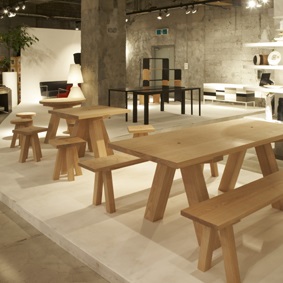
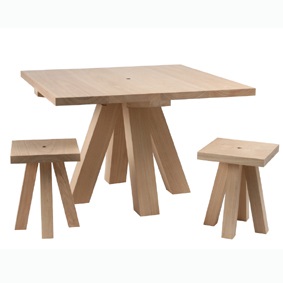
When I arrived in Tokyo that morning, I wanted to see the products first just to make sure that they wouldn’t be a disappointment. The tables were made exactly as I had designed them and looked just as I had hoped. That sounds quite logical doesn’t it, but things often happen differently in the Netherlands. “There wasn’t enough wood”, and “A slightly different size doesn’t matter, does it?” Or “A larger radius is much better; you can’t hurt yourself if you knock against it.” Basically, there’s always something that ruins the first model. In Japan, they just follow the drawings. They only want to make whatever it is you originally designed, after all that is why they commissioned you in the first place!
The Dordogne
I went to the Dordogne with Jeanine and the children for the autumn school holidays. A great holiday, as we could see how the building work had progressed and there was enough in place to allow us to fantasize about how it would all look when finished. We ate apples, chestnuts and wild mushrooms that we picked and gathered in our own garden. Looking for wild mushrooms in the woods was one of the highlights of the holiday. We took so many photographs of wild mushrooms that the album is almost full. We knew that there were two common edible varieties, but only found out how they looked in the last few days.
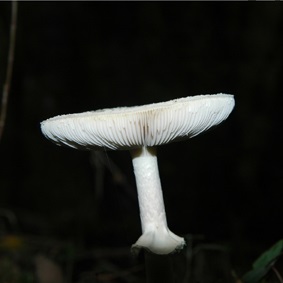
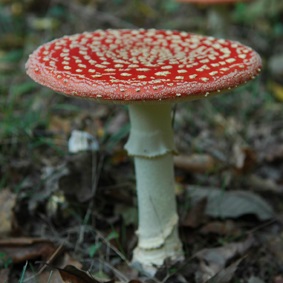
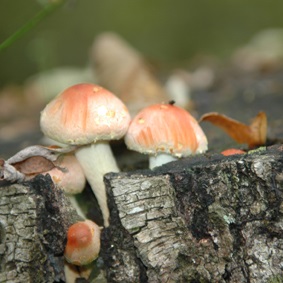
The houses are progressing nicely, although all the brickwork, which uses stones found locally, has been a hell of a job that has kept Jean and Eric busy for the last few months. A huge, panoramic oak window frame has been installed and most of the roof is now in place. Work can carry on inside this winter. The buildings will be finished in the spring. We are going to stay in them ourselves first, just to make sure everything is as we want it!
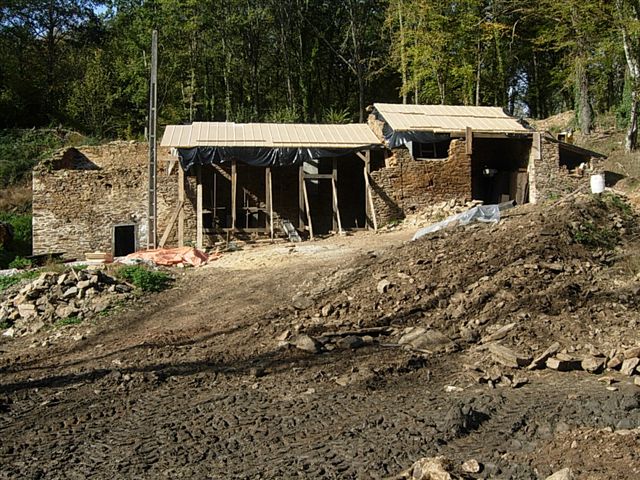

This post is also available in: NL
« Back to blog